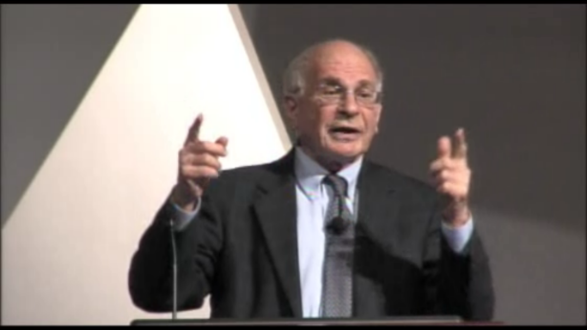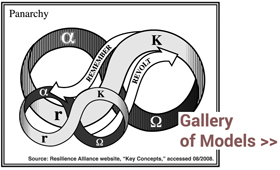
Psychologist Daniel Kahneman wraps up his talk at the National Academy of Sciences colloquium on social science research in science communication by stating that he has presented “a fiction.” And it is a fascinating yarn he’s spun.
Summarizing the main threads of his new book Thinking, Fast and Slow, Kahneman describes “a psychodrama with two characters”: System 1 thinking and System 2 thinking.
“When we think of ourselves,” he writes:
[W]e identify with System 2, the conscious, reasoning self that has beliefs, makes choices, and decides what to think about and what to do. Although System 2 believes itself to be where the action is, System 1 is the hero of the book.
System 1 is intuitive, instinctive, automatic, emotional, and associative. System 2 is deliberate, specific and detailed. System 1 handles the commonplace and familiar motions of driving a car. System 2 takes over when facing a left turn into oncoming traffic.
A couple of passages that caught my attention.
There is a key difference between associations and inferences. Order and sequence are essential to inferences … associations are symmetric. … If a disgusting word is mentioned … you feel disgusted and you make a disgust face. If you shape people to make a disgust face, they will feel disgusted. So it really works both ways. … This is just one example out of many of the symmetry we find in associations, and it’s the same symmetry that we find between arguments and conclusions. Things work both ways, in many cases. … Scientists normally think of coherence as logical coherence … if a then b. There is another kind of coherence, which is associative and emotional coherence. It’s not sequential. The model for it is the coherence of a network. Ideas that support each other are reinforced; other ideas are inhibited. And what you have is a solution that is a coherent solution … associatively and emotionally. (Beginning at 26:20.)
This is the story I have to tell you. I think there are two ways of believing and knowing. And there are two ways of achieving coherence: logical coherence and associative or emotional coherence. And we tend to believe that we are system two, because that’s what we are conscious of, but in fact most of what we are doing is dictated – and, usually, very appropriately – by an associative system, over which we have very limited control. And that has profound implications for the way we ought to talk to people. (Beginning at 52:45.)
Source: video (May 21-22, 2012)


Funny, I just popped in to drop you a link to this: http://www.newyorker.com/online/blogs/frontal-cortex/2012/06/daniel-kahneman-bias-studies.html , and find you all Khaneman’d up as well.